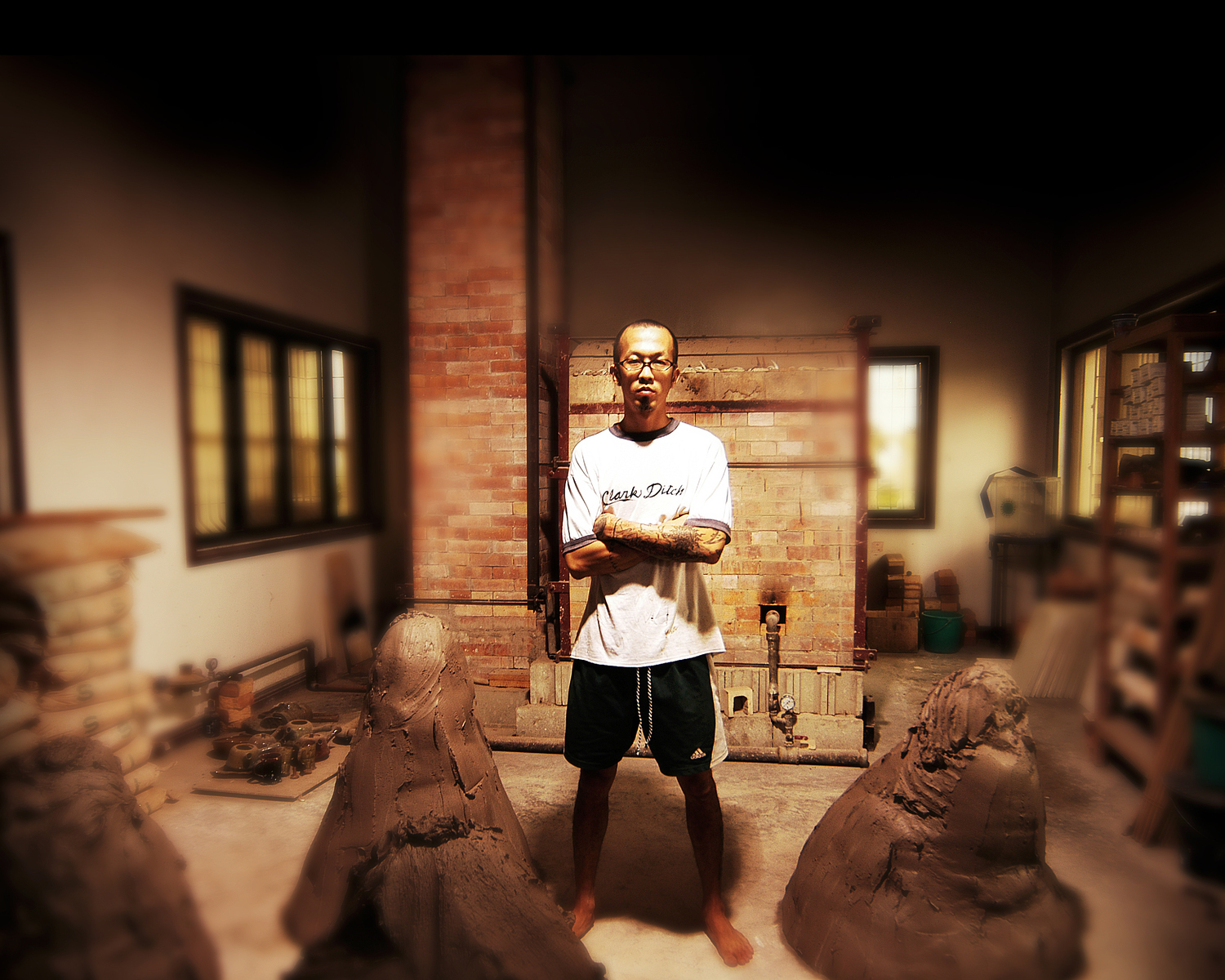"Dancing Hands of a Stoneware Potter" Philippine Panorama Magazine November 26, 2006 by Filippina Lippi
Stoneware potters have dancing hands. On their wheels, they slap a slab of clay, raise it to life, and push their creations beyond the limits of colors and forms only to aim for something beyond form.
Hadrian Mendoza, a stoneware potter for almost ten years has hands that can command the shapes of functional and sculptural forms, and eyes that are forever hungry for colors and their stunning effects. He has mastered the science of fire and chemicals. He has patiently learned about craftsmanship from mentors only to arrive at an understanding that there is something that he cannot control in his own field because pottery is also made by fire.
Nine years ago, while a student at the Corcoran School of Arts and Design in Washington, DC, Mendoza made a five-foot tall work entitled "Chain Vase." It was fired at his school's nine-foot tall kiln.
"Chain Vase" has strong horizontal lines traveling across its orange belly. Its six sections are deliberately shown, not hidden. "At the time, I didn't know how to hide the sections of a big jar. I could not make them look seamless. To break its form, i incorporated a long chain at a semi vertical angle across the tall jar," recalls Mendoza.
Interpreters say that the "Chain Vase" is raw and unconscious work of a Filipino artist who felt with intensity the clashes of culture, his and that of the host country, while he was growing up in the US.
Last year, Mendoza has embarked on a project to make another "Chain Vase." He was confident that he could recreate past works because of the expertise that he has acquired from his mentor, Jon Pettyjohn, who is known as the imminent father of Philippine pottery.
"But by way of working with clay has changed. The movement of my hands has changed," mendoza explains, adding, "My old Chain Vase has a stronger energy because I did it when I did not know so much about the discipline of pottery making."
Theoretically, repeating an old vase can be done by its creator. "To do that, I have to step back and try to change the position of my hands. I'll look at the pot, feel its lines and finger marks. I have to remember how i held my hands then. I'll work quickly with my palms instead of my fingers. I won't think much and I'll have fund doing my work," he says.
Mastery comes with technique. It is also the start of an arduous struggle to make beautiful pieces with energy that can delight more than bore with perfect craftsmanship.
"I have recreated my style as quick as I can for the past five years," says Mendoza, who is known among his peers for his penchant for expressionistic sculptural pieces and reinvented functional forms.
Recently, Mendoza has been experimenting dangerously. He has been stretching or "flopping" his clay for it to reach softness that might collapse when fired. "It is one way of creating works with grace and movement. Clay, as you know, is as hard as steel when fired," he says. He has allowed his glazes to run wild, for texture and stunning effect, even if uncontrolled drips can potentially ruin a pot during firing.
"It's like walking to the edge because all these things have to bed one quickly so that my stoneware pots are not ruined when they are fired," Mendoza explains.
He has been using two or three basic natural glazes" ipil ash which emit light greens; Pinatubo ash which radiate with browns and blues; and sugar cane ash which bring out shades of dark olive green.
"The point I am trying to reach by now is to make the glaze and the shape of my work as one," he says. Despite the array of his beautiful works, attaining this ideal "does not happen very often," he says.
A hard working potter controls the mixing and preparation of his clay, the shaping and the glazing of his works. "I do all these things," attests Mendoza.
Every potter knows that even if he has put everything in order, chemistry does its own magic such that the colors of stoneware pots burst or blend together on their own until they attain a kaleidoscope of vibrant colors. Funny, all these things happen while the pots are inside a shut kiln, with fire, and beyond man's touch.
